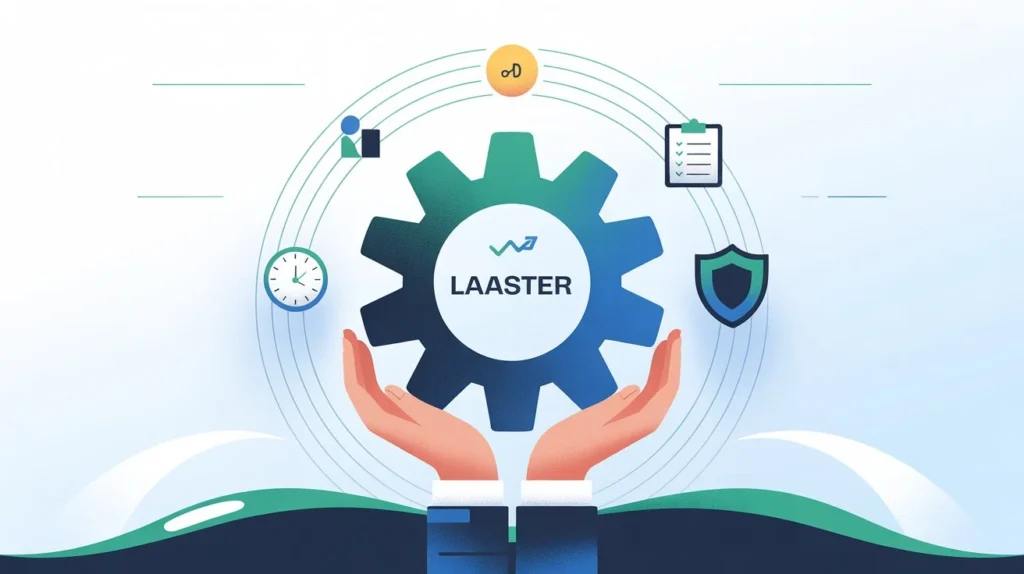When people search for laaster, the intent usually revolves around understanding what it means, its practical applications, and why it matters. Whether seen as a tool, concept, or process, individuals want a detailed explanation that connects theory to practice. This guide unpacks the idea in simple terms, explores its benefits, discusses real-world examples, and provides actionable insights to help readers use it effectively in daily life or work.
What is Laaster?
This term refers to a concept or tool that embodies strength, reliability, and function. Its meaning often varies depending on context, but at its core, it signifies something that makes tasks easier and more efficient.
Think of it as a bridge: it connects needs with solutions. When applied in industries like technology, construction, or even personal growth, it becomes a symbol of support, making difficult tasks manageable.
You might also like: cñims Framework: Secure, Scalable AI for 2025
Why Understanding Laaster Matters
This isn’t just a word — it’s an idea that influences how people work, build, or create. Understanding it ensures you can:
- Improve efficiency in your workflow
- Reduce unnecessary stress or wasted effort
- Strengthen long-term results through reliability
Many overlook this concept because they fail to connect meaning with application. Yet, once understood, it can open opportunities for smarter problem-solving and innovation.
Benefits of Laaster
The practical benefits extend far beyond a simple definition. They include:
- Enhanced Productivity: It reduces extra effort by providing structure and reliability.
- Consistency in Results: Outcomes remain stable and dependable.
- Time-Saving: It cuts down repetitive or unnecessary steps, making tasks more efficient.
- Stress Reduction: By simplifying processes, this system allows for smoother workflows.
- Versatility: From personal use to industry-specific applications, it adapts easily.
Challenges of Using Laaster
Like any concept or tool, this approach comes with its own set of challenges. Some common ones include:
- Misinterpretation: Without clarity, people often confuse it with unrelated terms.
- Implementation Gap: Knowing it is one thing; applying it correctly is another.
- Over-Reliance: Depending solely on one method without adapting can create rigidity.
- Resource Demand: In certain industries, integration might require time or money.
These challenges highlight the importance of balance. Using it effectively means understanding when and how it fits best.
Real-World Examples of Laaster in Action
To bring the concept into perspective, let’s consider practical scenarios:
- Technology: In software development, it could represent frameworks that simplify coding, ensuring efficiency and accuracy.
- Construction: Here, it may stand for tools or support systems that strengthen structures while saving time.
- Education: Teachers applying similar methods create better lesson plans that simplify complex subjects.
- Personal Development: On an individual level, it might symbolize habits or strategies that reduce stress and improve focus.
Each of these examples shows it as a supportive foundation — a reliable partner in achieving goals.
Step-by-Step Guide to Applying Laaster
Understanding is only the beginning. The real value lies in applying it effectively.
1: Identify the Need
Determine where this method is required — is it for efficiency, stability, or problem-solving?
2: Choose the Right Form
It can mean different things in different contexts. Match the tool or method to your specific situation.
3: Integrate Gradually
Introduce the approach step by step into your workflow rather than making sudden changes.
4: Measure Outcomes
Track how the method improves productivity, efficiency, or stress levels.
5: Adjust as Needed
This is flexible. Modify how you use it based on outcomes and evolving needs.
Tips for Maximizing Laaster Efficiency
To ensure the best outcomes:
- Keep your goals clear before using it.
- Don’t overcomplicate — simplicity is key.
- Use feedback to improve effectiveness.
- Stay open to alternative applications.
Future of Laaster in Modern Use
This is not static. As industries evolve, its meaning and applications expand. In the future, it could take new forms:
- Smarter digital tools powered by AI.
- More resilient materials in construction.
- Innovative teaching aids in education.
- Lifestyle methods to manage modern stress.
The concept will continue to adapt, making it an evergreen idea across generations.
FAQs About Laaster
What does laaster mean?
It refers to a concept, tool, or system that provides strength, reliability, and efficiency in solving tasks.
Is laaster useful in everyday life?
Yes, it can apply to personal habits, tools, or processes that make daily life smoother and less stressful.
What are the benefits of laaster?
It improves productivity, ensures consistency, saves time, and reduces stress.
Can laaster be applied in industries?
Absolutely. From technology to construction, it has practical applications across multiple sectors.
What are the challenges of using laaster?
Misinterpretation, over-reliance, and resource demands are some of the common challenges.
How do I apply laaster effectively?
Start by identifying the need, selecting the right form, integrating it gradually, and measuring outcomes.
You might also like to read about tatasecs.org
Conclusion
Laaster is more than just a concept; it’s a practical tool for improvement. By understanding its meaning, benefits, and challenges, and by seeing how it applies in real-world situations, individuals and organizations can harness it to achieve greater success. The future looks promising, with endless possibilities across industries and personal development.
If you want to make your work or life easier and more productive, start integrating this approach today. Use it wisely, track your outcomes, and adjust as needed — because it’s all about making progress without unnecessary struggle.






